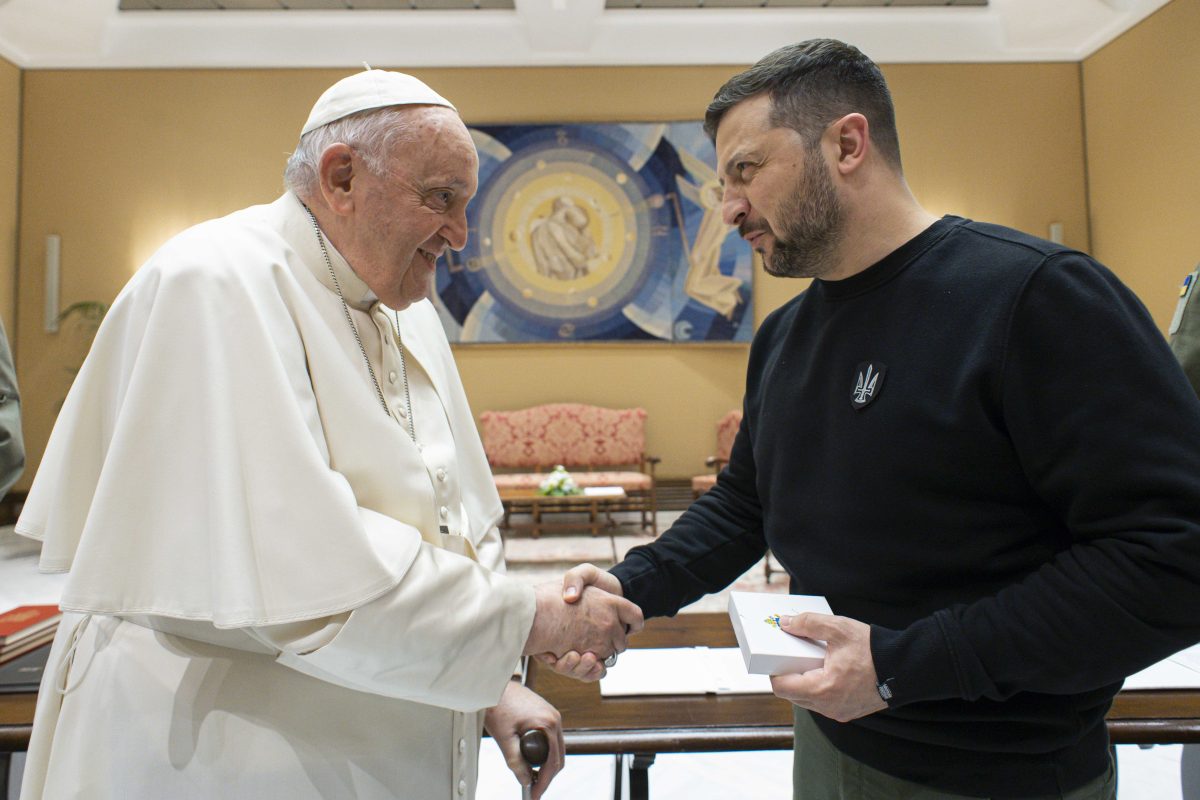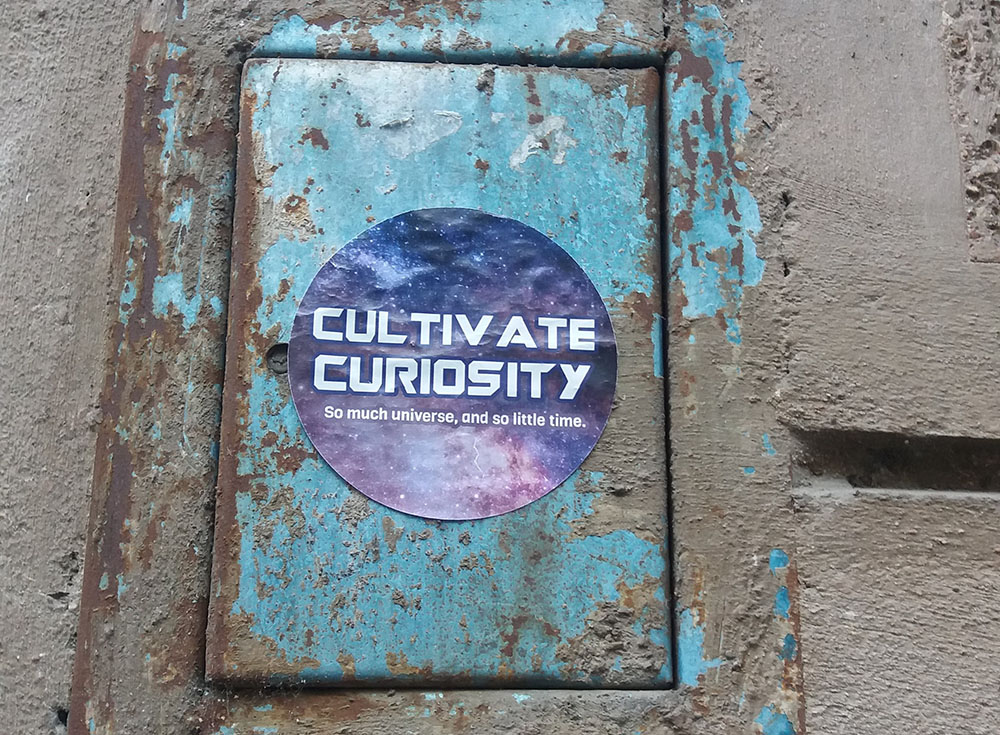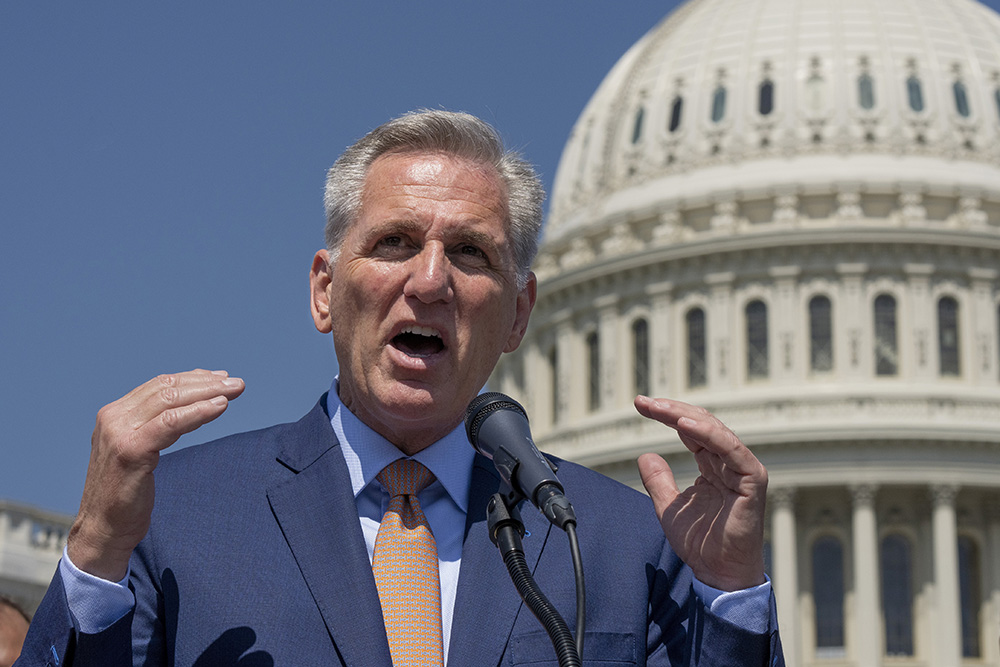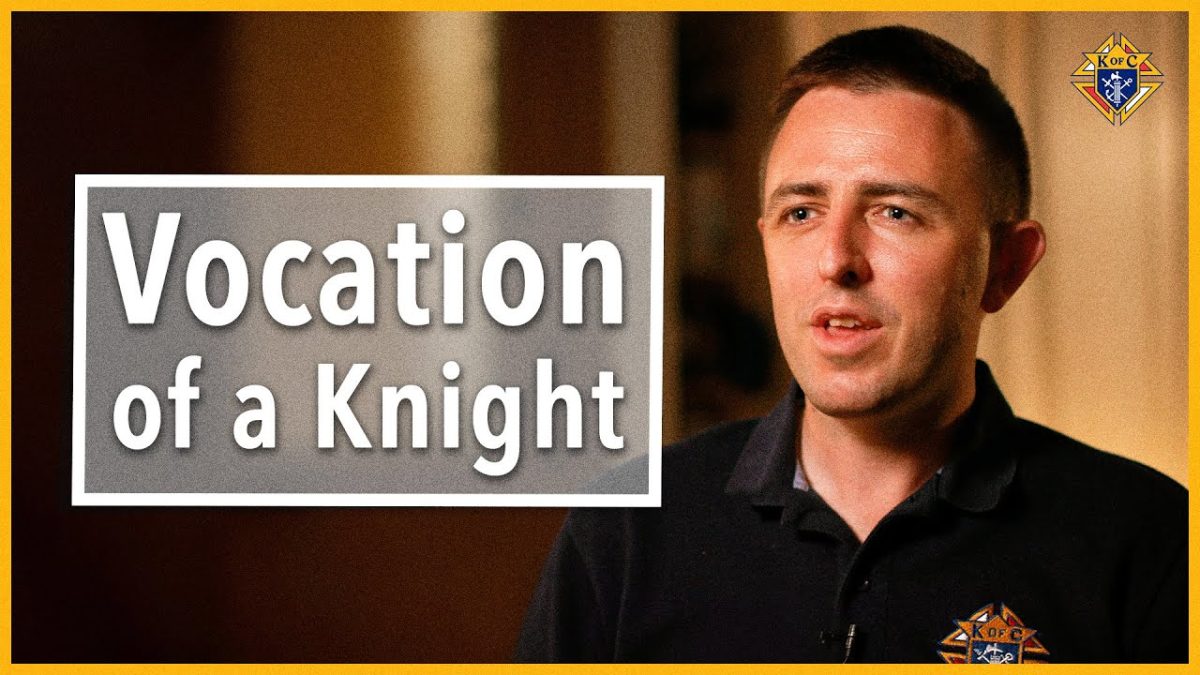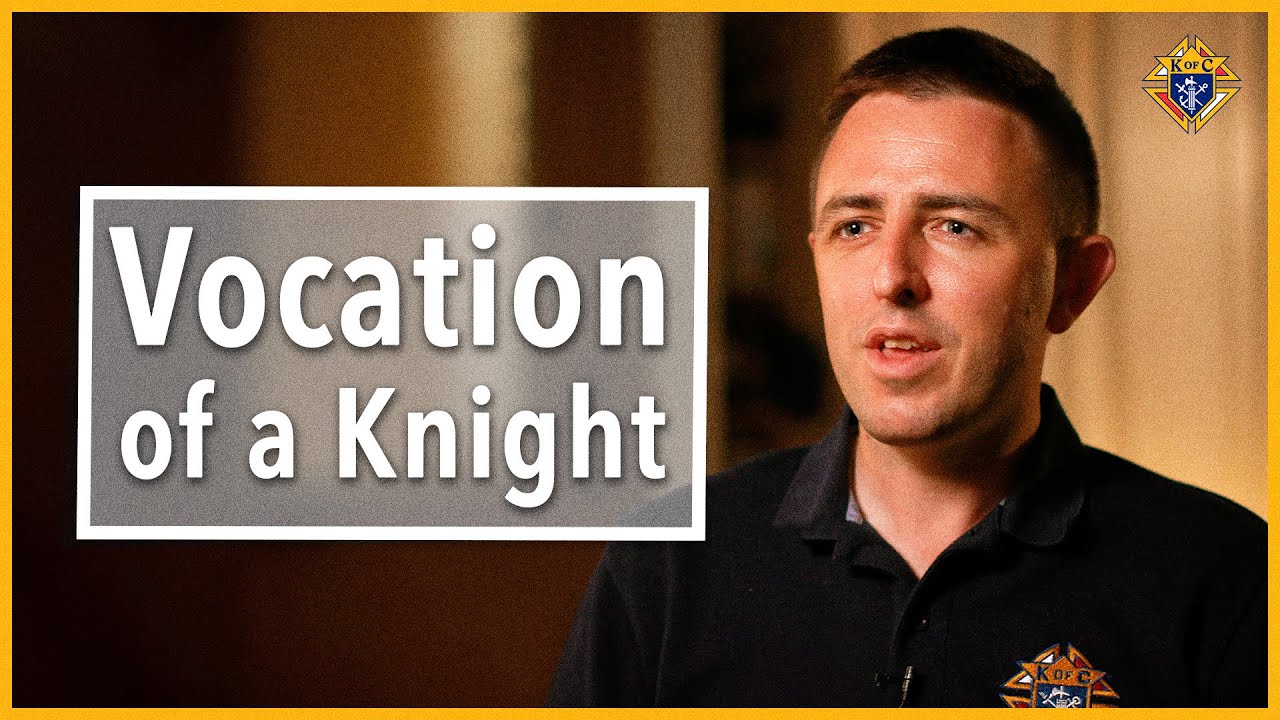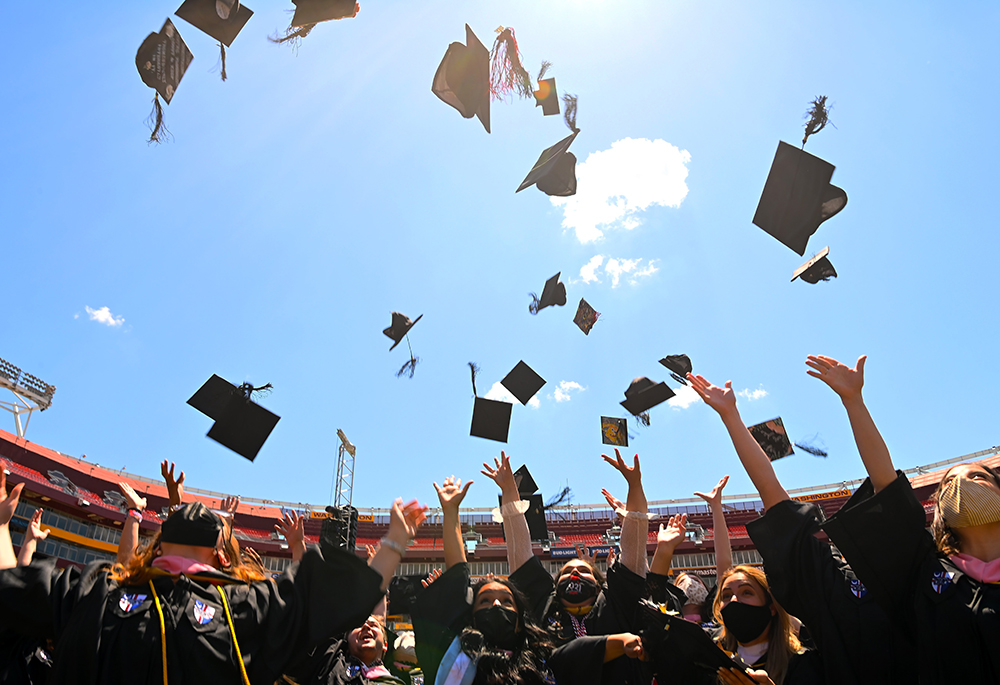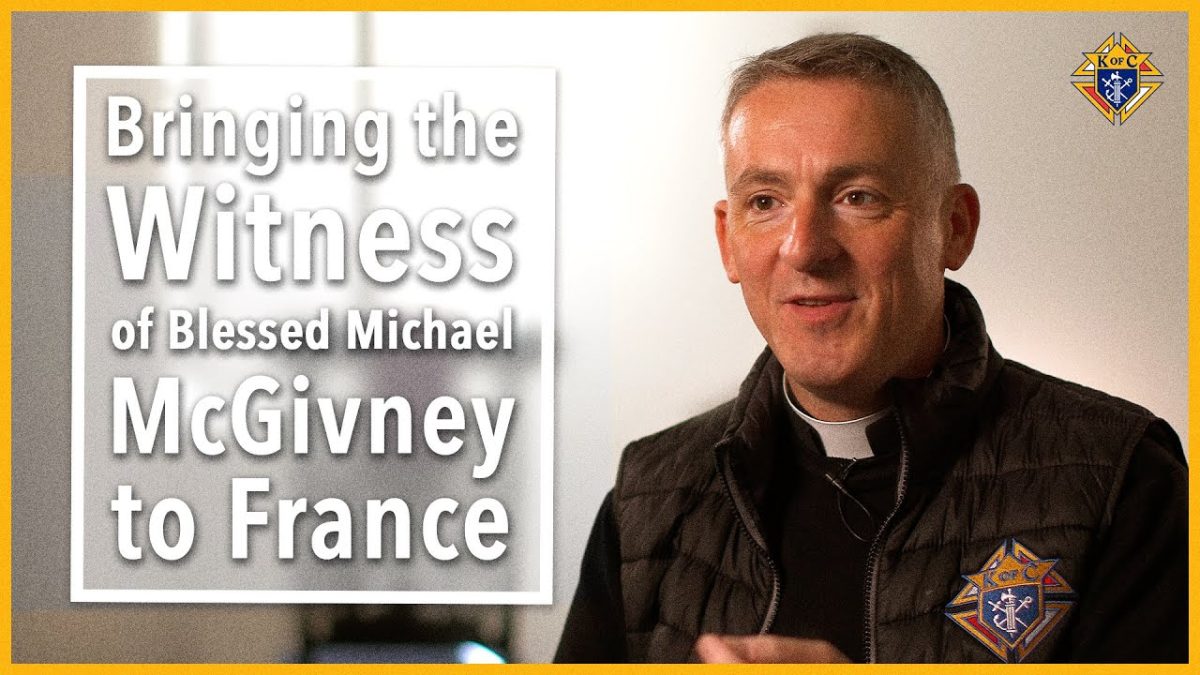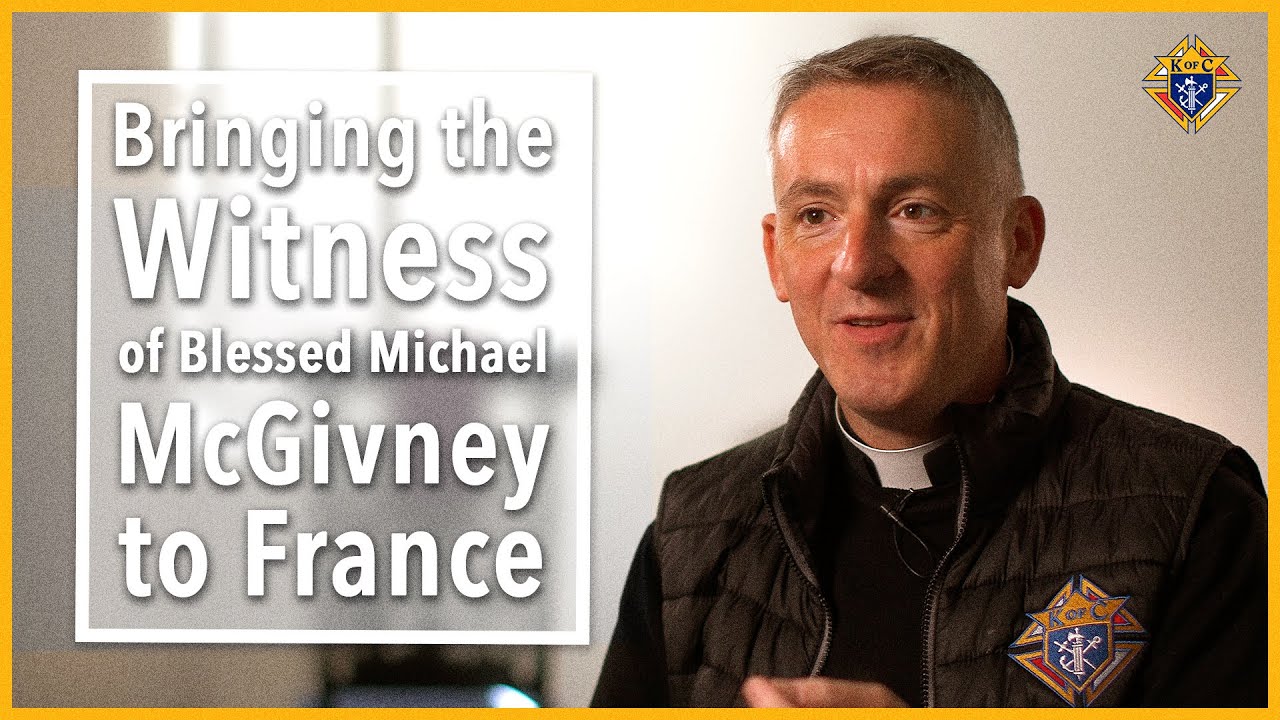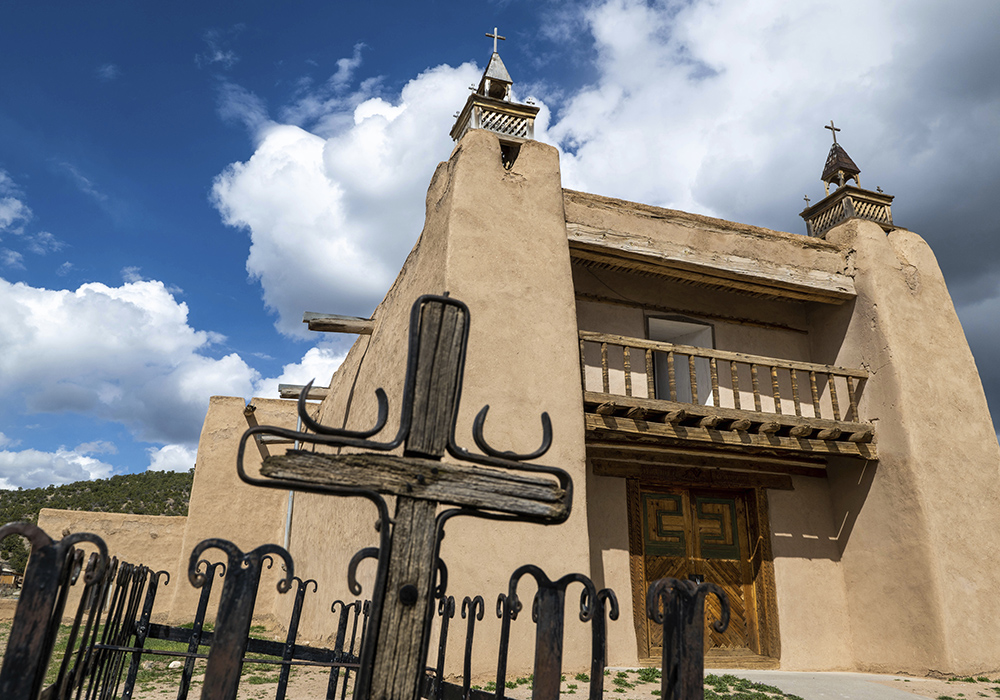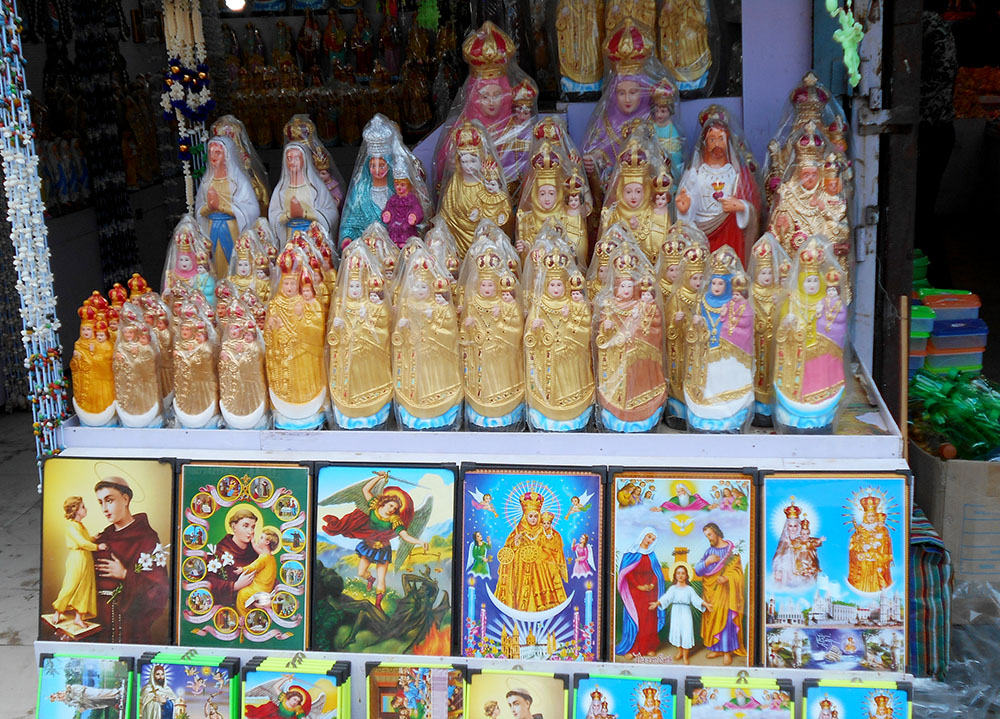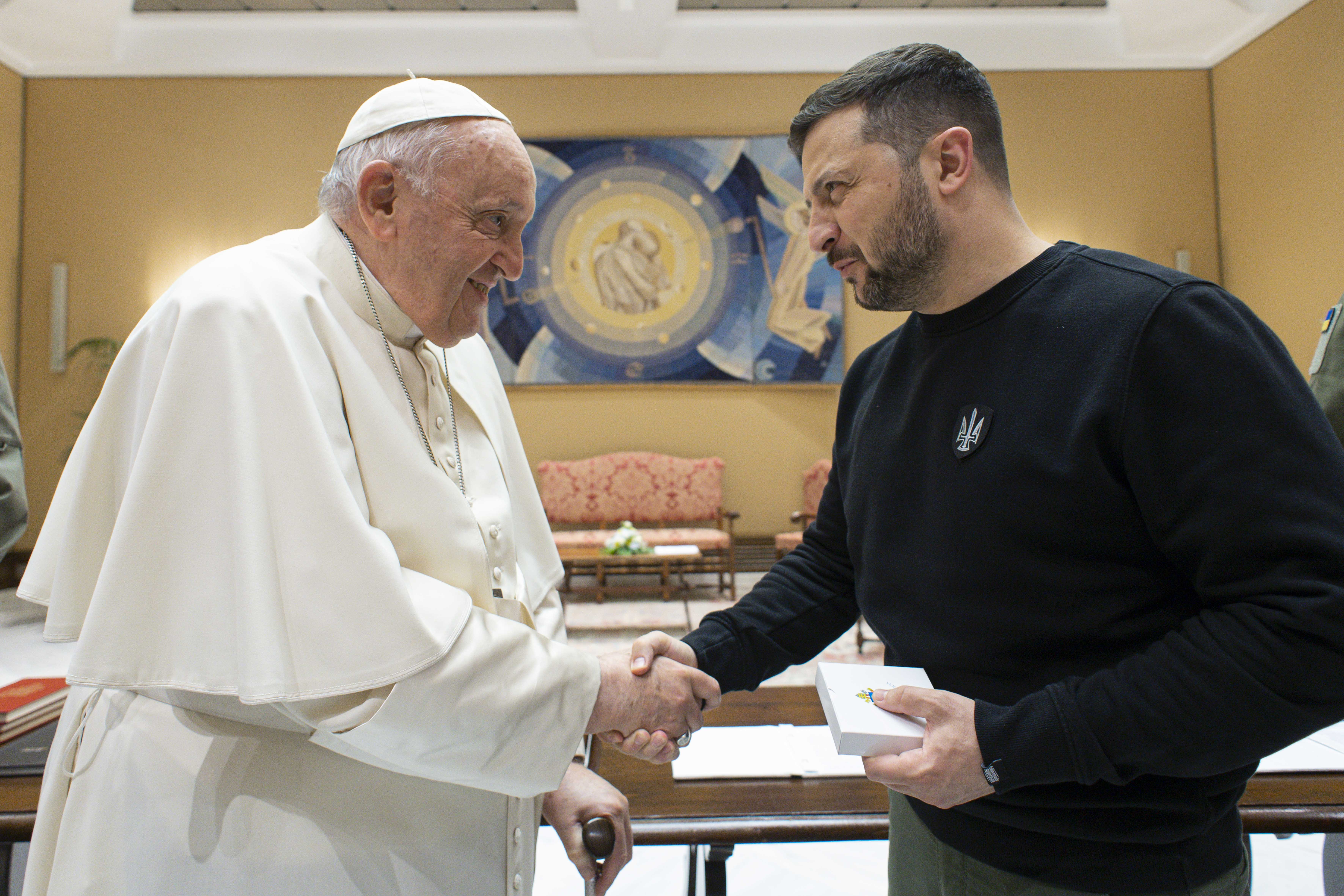
Amid the Holy See’s efforts to push for peace, Pope Francis met with Ukrainian President Volodymyr Zelenskyy on May 13, marking a rare wartime encounter at the Vatican between a pontiff and a head of state and on the eve of an anticipated Ukrainian counteroffensive against Russia.
Zelenskyy’s closely watched visit comes two weeks after the pope told reporters that he is engaged in a secret mission to end Russia’s war against Ukraine. Since that time, both Russian and Ukrainian officials have said they are unaware of any such plans and have not authorized any peace negotiations. The pope’s top diplomatic aides, however, have insisted that plans are underway.
Since the start of the war on Feb. 24, 2022, Zelenskyy and other Ukrainian officials have made regular appeals for the pope to visit the war-torn country. The pope has said he is willing to visit, but only if he could travel to Moscow, as well, to make an appeal for peace.
But on day 443 of the war, Zelenskyy instead came to pay a visit to the pope.
On a rainy Saturday afternoon in Rome, the Ukrainian president’s motorcade made its way up the via della Conciliazione, the main thoroughfare leading to St. Peter’s Square, as onlookers lined the streets waving Ukrainian flags.
Upon his arrival at the Vatican, Zelenskyy exited a black Jeep dressed in a version of what has become his signature outfit since the start of the war: a black sweatshirt with the Ukrainian trident on the chest and green cargo pants. It marked a stark contrast from the more customary formal dark suits worn by world leaders for papal meetings.
Francis greeted Zelenskyy at the door of the Vatican’s Pope Paul VI Hall, rather than the Apostolic Palace, which is traditionally used for meetings with heads of state.
« Thank you for this visit, » the pope said to Zelenskyy in Italian. « A great honor, » Zelenskyy replied in English, placing his hand over his heart.
The pope and the president met for 40 minutes behind closed doors, with Zelenskyy giving the pope a bullet-dented plate and a poster in the style of an icon titled « Loss. » The image memorialized the lives of children who died in the early days of the conflict.
A Vatican readout of the meeting said the pope assured Zelenskyy of his constant prayers and emphasized an urgent need for « gestures of humanity » to help victims of the war. In a tweet, Zelenskyy emphasized that he asked the pope to condemn Russian war crimes, writing that « there can be no equality between the victim and the aggressor. »
He also said that he asked the Vatican to back Ukraine’s peace formula, which includes the withdrawal of Russian forces from the country, a restoration of all of Ukraine’s sovereign territory, Russian war reparations and postwar security guarantees for Ukraine.
Following his meeting with the pope, Zelenskyy met with the Vatican’s foreign minister, Archbishop Paul Gallagher, for 30 minutes.
The Vatican has made multiple overtures to serve as a mediator between Russia and Ukraine since the start of the war, though some experts have questioned what role the Catholic Church can play in ending a conflict between the two predominantly Orthodox countries.
While the pope has explicitly stated that Ukraine has a right to self-defense, including receiving arms from allies, he has also called for both sides to lay down their weapons and negotiate an end to the 15-month conflict.
At various points throughout the war, Ukrainian government officials have expressed frustration at the pope’s joint calls for both Russia and Ukraine to end the war, saying it gives the impression that both parties bear some of the responsibility.
Following a meeting at the Vatican with the pope last month, Ukraine’s Prime Minister Denys Shmyhal emphasized that he believed the Holy See could serve a primarily humanitarian role in the conflict, specifically by aiding in the return of what is estimated to be thousands of Ukrainian children taken from their homeland.
En route home from a trip to Hungary last month, Francis told reporters the Vatican would work towards that goal, noting that the Holy See had already been involved in brokering successful prisoner exchanges between Ukraine and Russia.
The pope has spoken with Zelenskyy three times by phone since the beginning of the conflict, the last conversation taking place on August 12, 2022.
Despite repeated efforts — including an unprecedented visit by the pope to the Russian Embassy to the Vatican the day after the war began to express his concerns — Francis has not been able to speak directly to Russian President Vladimir Putin.
The May 13 visit marks Zelenskyy’s second visit to the Vatican since being elected president of Ukraine in 2019. His last visit took place on Feb. 8, 2020, just prior to the start of the COVID-19 pandemic. A Vatican readout of that meeting made reference to Russia’s 2014 invasion of Crimea, noting at the time that the conflict was still afflicting Ukraine.
Three years later, Zelenskyy’s arrived here in Rome on May 13 facing far graver challenges, seeking both the pope and the Italian government’s continued support for his beleaguered country.
During his brief one-day stay in Rome, Zelenskyy also met with Italy’s President Sergio Matarella and Italian Prime Minister Giorgia Meloni prior to heading to Germany where he, along with the Ukrainian people, will receive the International Charlemagne Prize, an annual award given for contributions towards European Unity.
« An important visit for approaching victory of Ukraine! » Zelenskyy tweeted.
